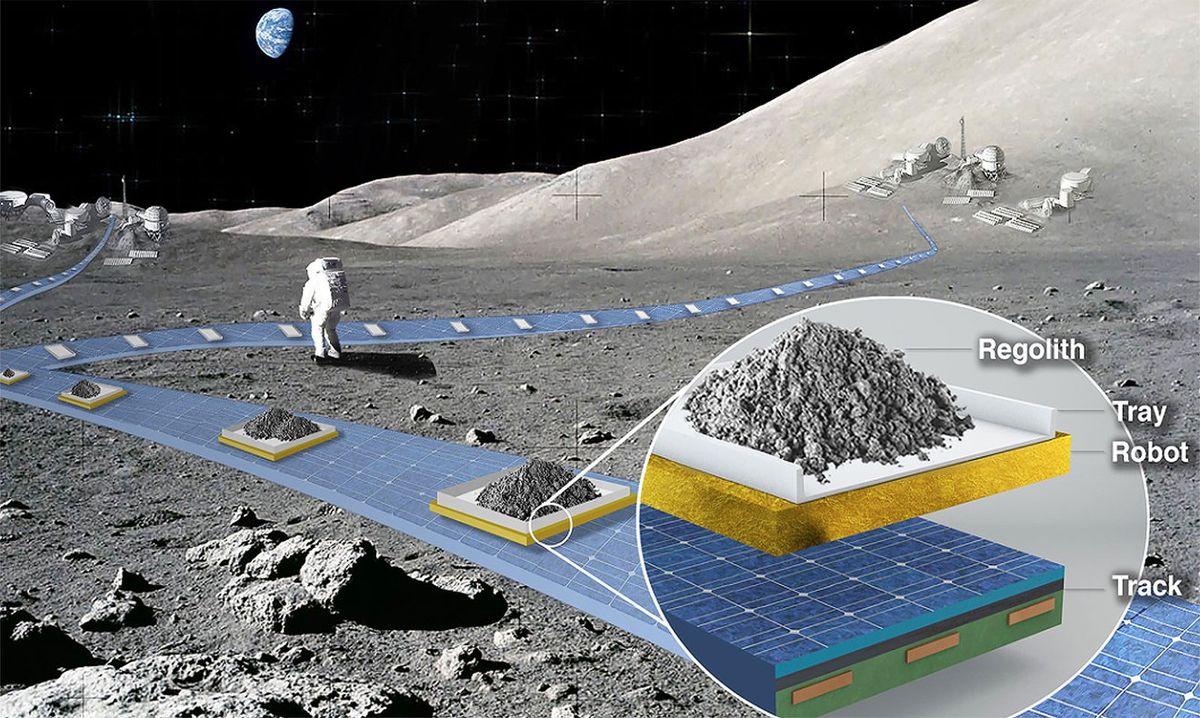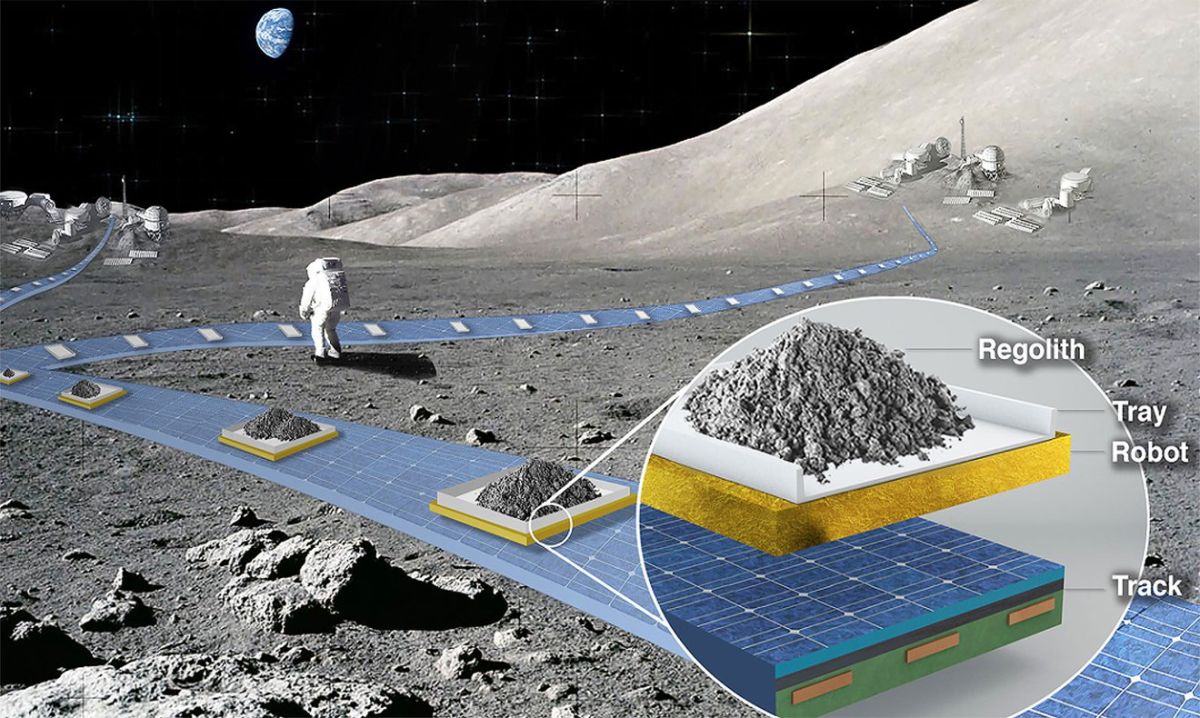
NASA’s newest fleet of far-out exploration ideas include projects that could one day return samples from Saturn’s moon Titan, allow astronauts to experience artificial gravity in space, or send staggering quantities of planetary data back to Earth.
The agency announced the latest recipients under the NASA Innovative Advanced Concepts program, which examines early-stage ideas for exploring the universe. While many of these projects may be decades from launch, NASA and related groups may use some of the ideas in future programs.
This year’s round provides the Phase I recipients up to $125,000 each for preliminary research. Those who complete their requirements can apply for a Phase II grant after nine months. The program generally provides up to $500,000 each for Phase II recipients and $2 million each for Phase III.
Related: Venus missions? Interstellar probes? Here are 18 wild space tech ideas NASA is looking at
“There is an overwhelming number of new participants in the program this year,” Jason Derleth, NIAC program executive, said in a statement from NASA’s Jet Propulsion Laboratory (JPL). “All but two of the researchers selected for Phase I awards will be first-time NIAC grant recipients, showing NASA’s early-stage opportunities continue to engage new creative thinkers from all over the country.”
NIAC was established in 2011 following a predecessor program called NASA Institute for Advanced Concepts.
Below is the full list of 2021 Phase I recipients; the brief descriptions are taken directly from each project’s individual experiment pages on the NIAC website.
Regolith Adaptive Modification System (RAMs) to Support Early Extraterrestrial Planetary Landings (and Operations): Sarbajit Banerjee of Texas A&M Engineering Experiment Station’s project will study selective reinforcement and fusing of lunar surface materials.
Exploring Uranus through SCATTER: Sustained ChipSat/CubeSat Activity Through Transmitted Electromagnetic Radiation: Sigrid Close of Stanford University’s project will study the capability for a parent spacecraft to transmit power and remotely manipulate a small probe spacecraft through a laser transmitter.
Ablative Arc Mining for In-Situ Resource Utilization: Amelia Greig of University of Texas, El Paso’s project will encompass extraction and collection of water in parallel with as many other local materials as possible. Ablating surface material using electric arcs creates free ionized particles that can be sorted by mass into material groups and transported to a relevant collector by electromagnetic fields.
Kilometer-Scale Space Structures from a Single Launch: Zachary Manchester of Carnegie Mellon University’s project addresses the challenge that to produce artificial gravity near 1g [Earth’s gravity] for astronauts, a kilometer-scale structure is needed. It will leverage recent advances in mechanical metamaterials to design lightweight deployable structures with unprecedented expansion ratios.
PEDALS: Passively Expanding Dipole Array for Lunar Sounding: Patrick McGarey of JPL’s project will include a series of discrete dipoles that, through unique combinations and coupling of short dipoles into larger ones, extends the effective resolution of the lunar subsurface by allowing for variable frequencies and depths.
Autonomous Robotic Demonstrator for Deep Drilling (ARD3): Quinn Morley of Planet Enterprises’s project will test an autonomous drilling system that would utilize a Perseverance-type rover as a drill rig. The drilling strategy does not rely on cables; instead, self-contained robots drive up and down the borehole autonomously. These robots are nicknamed “borebots.”
Extrasolar Object Interceptor and Sample Return Enabled by Compact, Ultra Power Dense Radioisotope Batteries: Christopher Morrison of UltraSafe Nuclear Corp. — Space’s project will study a compact radioisotope-electric-propulsion spacecraft design powered by a novel Chargeable Atomic Battery. A spacecraft powered by this technology will be able to catch up to an extrasolar object, collect a sample, and return to Earth within a 10-year timeframe.
Atomic Planar Power for Lightweight Exploration (APPLE): Joseph Nemanick of The Aerospace Corp. will study an enabling architecture for deep solar system missions on low mass, fast transit space platforms. The vehicle integrates a long-lived, peak power capable, rechargeable, and modular power system with solar sail propulsion.
A Titan Sample Return Using In-Situ Propellants: Steven Oleson ofNASA Glenn Research Center’s project will explore a proposed Titan sample return mission using in-situ volatile propellants available on its surface.
ReachBot: Small Robot for Large Mobile Manipulation Tasks in Martian Cave Environments: Marco Pavone of Stanford University’s project will test a long-reach crawling and anchoring robot, which repurposes extendable booms for mobile manipulation, is deployed to explore and sample difficult terrains on planetary bodies, with a key focus on Mars exploration.
FarView – An In Situ Manufactured Lunar Far Side Radio Observatory: Ronald Polidan of Lunar Resources, Inc.’s project will be an end-to-end system-level study of how to build a very large low frequency radio observatory, “FarView,” on the lunar farside using lunar regolith materials.
FLOAT — Flexible Levitation on a Track: Ethan Schaler of JPL’s project will study the first lunar railway system, which will provide reliable, autonomous, and efficient payload transport on the moon. It employs unpowered magnetic robots that levitate over a three-layer flexible film track.
SWIM — Sensing with Independent Micro-swimmers: Ethan Schaler of JPL’s project will dramatically expand the capabilities of Europa subsurface access-class ocean-access robotic missions and significantly increase their likelihood of detecting evidence of habitability, biomarkers or life.
Making Soil for Space Habitats by Seeding Asteroids with Fungi: Jane Shevtsov of Trans Astronautica Corp.’s project will create soil from carbon-rich asteroid material, using fungi to physically break down the material and chemically degrade toxic substances.
Light Bender: Charles Taylor of NASA Langley Research Center’s project will use Cassegrain telescope optics as the primary means to capture, concentrate and focus the sun’s light. A second key innovation is the use of a Fresnel lens to collimate this light for distribution to multiple end users at distances of a kilometer (0.6 miles) or more away without substantial losses.
Solar System Pony Express: Joshua Vander Hook of JPL’s project will study a global, multi-spectral, high-resolution planetary surveyor supported by regular visits from a cycler satellite network to retrieve petabits of data for transit to Earth.
Follow Elizabeth Howell on Twitter @howellspace. Follow us on Twitter @Spacedotcom and on Facebook.



